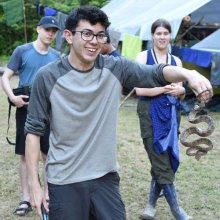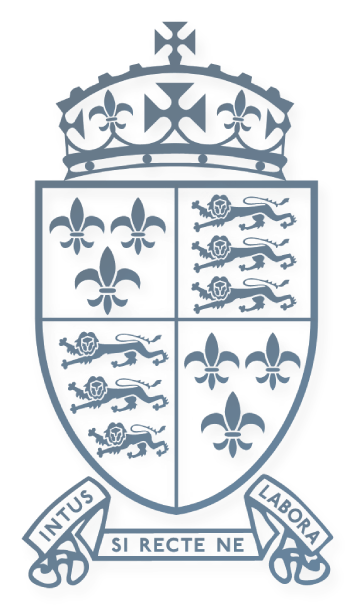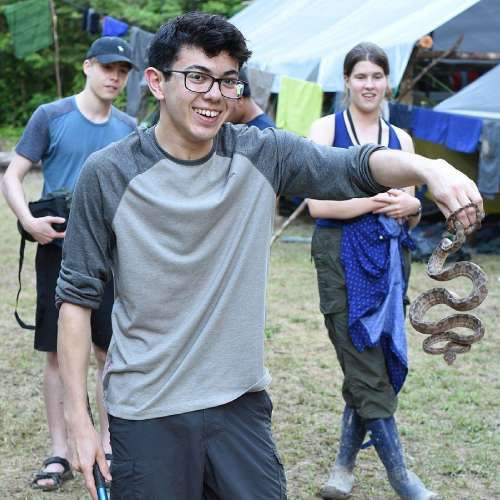Shrewsbury
Biology Expedition to Guyana 2019


During the summer holidays 22 intrepid Salopians and four members of staff travelled to Guyana to work alongside scientists and conservationists in the largest uninterrupted expanse of rainforest in the world.
Guyana is a small country with a population equivalent to a city the size of Leeds but it holds more than 10% of the world’s biodiversity. Many of the species there are endemic and live nowhere else.
The mission was to contribute to the programme of ecological monitoring in the Iwokrama Forest, which is testing the concept of sustainable management while working with the 20 indigenous communities that have a say in managing the forest and assessing the impacts of climate change.
Our long stop-over in Miami gave us a chance to enjoy a tour of the Everglades in an airboat.

After a very late arrival in Georgetown and a painfully early start, our first day in Guyana involved a 12-hour minibus drive to Iwokrama. The road – the main highway to Brazil – proved challenging... and at one stage the fortunate arrival of a large truck led to the rescue of our three stuck minibuses all at once.

Our day at Iwokrama was used for a sobering health and safety talk and fascinating lectures. However, we didn’t have long to get used to our incredible surroundings before travelling down the mighty Essequibo River to Turtle Mountain Field Camp to begin our work.
The students were split into four groups and contributed to surveys of birds, large mammals, bats, herpetofauna, dung beetles and forestry. We also took gruelling hikes at dawn and dusk for spectacular views and wildlife watching.

Elinor Jones and Amos Cheung setting up mist nets for bird surveys

Maddy Baly, Alessandra Ardissino and George Clowes learn from ornithologist Dr Brian O’Shea as he rings birds caught in the mist nets they had set up.

A lined-forest falcon that had been caught in the mist nets

Fishing trip: Elinor Jones holding her huge wolf fish aloft in triumph
 L: Harry Letts helping bat expert, Iona Cunningham to mark a bat before release. R: A vampire bat. These are rare and this was the second one caught in six weeks of continuous sampling with mist nets.
L: Harry Letts helping bat expert, Iona Cunningham to mark a bat before release. R: A vampire bat. These are rare and this was the second one caught in six weeks of continuous sampling with mist nets.

Spectacular views of nothing but rainforest from the top of Turtle Mountain
After a few days, we travelled back to Iwokrama and then a few hours further south to Surama village – a community of Macishi Amerindians who run a cooperative ecolodge to bring jobs and income to the community. They provided all the cooks, boats and guides for our journey up the Burro Burro River to Rock Landing field camp where we were to spend six nights and undertake further surveys as before.

Nathan Mielczarek on the Burro Burro River

Accommodation at Rock Landing camp

Katie Ford and Charlotte Russell late at night working their way through a dichotomous key to identify a bat they had caught with Iona Cunningham and Quincey Augustine from the Veterinary Department of St George’s University, Grenada

Charlotte Russell and Mrs Temple on a large mammal survey

A rare emerald tree boa

Arthur Bramwell with a yellow tail cribo snake... and Jeffrey Li holding a huge black piranha
The group then travelled hours downriver to Sandstone Camp for our final night in the rainforest. On the way we were hugely privileged to see a harpy eagle. It is one of the largest species of eagle in the world and a female can weigh up to 9kg, measure up to 107cm in length and have a wingspan of 2.2m (relatively short for such a huge bird, as they are adapted as ambush predators that attack through forest cover where long wings would be an encumbrance). They have the largest talons of any eagle and can lift prey equal to their body weight.
 At Sandstone camp the guides discovered a very venomous fer-de-lance snake in the camp which our herpetologist, Sean Laughlin, calmly removed.
At Sandstone camp the guides discovered a very venomous fer-de-lance snake in the camp which our herpetologist, Sean Laughlin, calmly removed.
 We then travelled out of the forest to Surama Village where we spent the afternoon and one night before a 17-hour journey back to Georgetown. We played a very sweaty football match against the locals and enjoyed spectacular starry savannah skies.
We then travelled out of the forest to Surama Village where we spent the afternoon and one night before a 17-hour journey back to Georgetown. We played a very sweaty football match against the locals and enjoyed spectacular starry savannah skies.


On our final day in Georgetown, we flew to the spectacular Kaieteur Falls. These are virtually unknown and little-visited but are the most powerful single drop waterfalls in the world. The total height is a dizzying 251m and the average flow rate is 663 cubic metres per second. With nothing but rainforest around it is one of the most magnificent places on earth and a brilliant way to end the expedition.


Working with knowledgeable and dynamic scientists in such beautiful and remote locations was hugely inspiring. Their leadership and example, together with the wildlife and beautiful environments we saw, will, I hope, live long in the memories of all those who took part in the expedition. And I hope that a new generation of Salopians will be inspired to travel off the beaten path and love travel and the wonders of nature in equal measure. They rose to the many challenges and learnt a lot about themselves in the process.

James Leaver, Jetty Russell, Kaisei Tsujiki and Jeffrey Li arrive at Kaieteur Falls on one of two Cessnas
 Georgetown Cathedral: The largest wooden building in the western hemisphere and built by Sir Arthur Blomfield who also built the School Chapel!
Georgetown Cathedral: The largest wooden building in the western hemisphere and built by Sir Arthur Blomfield who also built the School Chapel!
Dr Richard Case
















.JPG&command_2=resize&height_2=85)
.jpg&command_2=resize&height_2=85)




